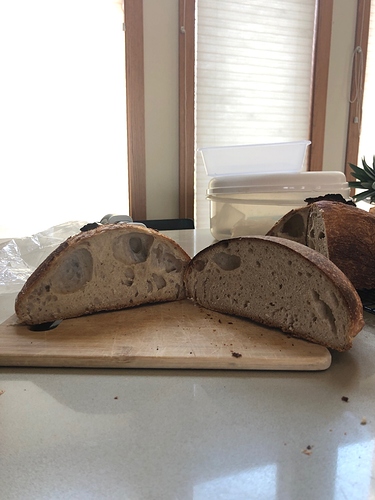Don’t know why these two loaves - both from same batch of no-knead sourdough dough (about 100 gm whole wheat, 500 gm unbleached white bread flour, and 100 gm all-purpose white flour) and both baked at the same time in cast-iron dutch ovens - came out differently!? neither was scored (as I’ve not successfully learned how to use a lame - always drags the dough!) Suggestions?
Thanks
Both are under fermented. Under fermented will often give a very tight crumb interspersed with gaping wide holes. Both breads tell the same story.
thank you! Pardon my relative lack of knowledge, but what exactly, in terms of timing and technique, does “underfermented” mean? Which part of the mixing, resting, rising, and proofing does that reference. Again, thanks for everyone’s patience with this relative newbie.
JAS
Well really its from when the starter goes in until the dough hits the oven. Or if its your starter backfiring then it needs to go back to the starter/preferment build. However taking into account its not some other issue, just timing, you want to focus on getting the bulk ferment done right. This is normally where things go wrong when the dough appears under fermented, i.e. a tight crumb with big gaping holes. Perhaps your recipe and method will help.
Much thanks. Guess I’ll continue to work on the basics and getting a WORKING understanding of the baking bread thing!
I wrote an article for you.
